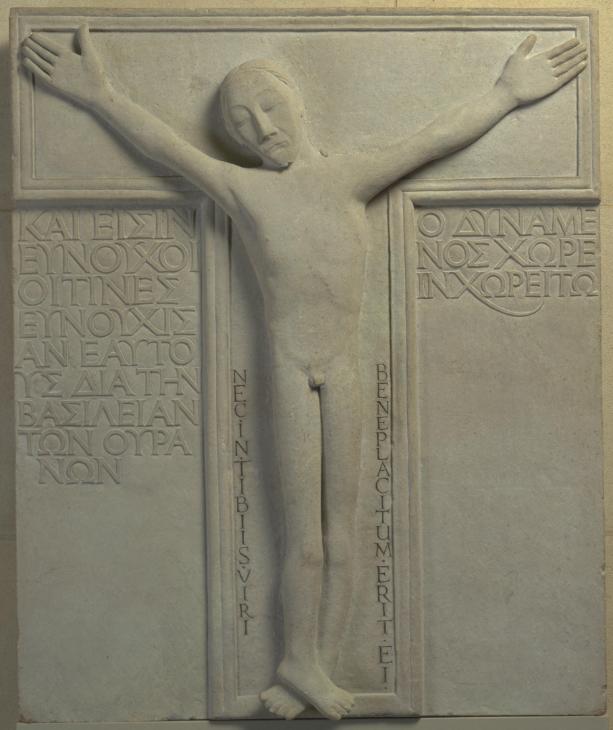Materials:
Hoptonwood Stone
Physical Object Description:
Incised: NEC. IN TIBIIS. VIRI / BENEPLACITUM. ERIT. EI (Psalm 147.v.10) and raised:
KAIEΣIN / EYNOYXOI / OITINEΣ /EYNOYXIΣ/ ANEAYTO / YΣΔIA THN / BAΣIÅEIAN / TΩNOYPA / NΩN/ OΔYNAME / NOΣXΩRE/ INXΩPEITΩ (Matthew 19.v 12) - with symbol of an eye in a hand, on back
Dimensions:
94.6 x 78.1 x 12.7 cm
Accession Number:
N03563
Credit:
Presented by the Contemporary Art Society, 1920
Ownership history:
Purchased from the Chenil Gallery. London at the artist's two-man exhibition (with James Dickson Innes) by Roger Fry (1866-1934) and Robert Ross (1869-1918) for the Contemporary Art Society (as 'Two Bas-Reliefs'; together with 'A Roland for an Oliver/Joie de Vivre', presented to University of Hull Art Collection, 1976), 1911; presented to Tate, 1920


